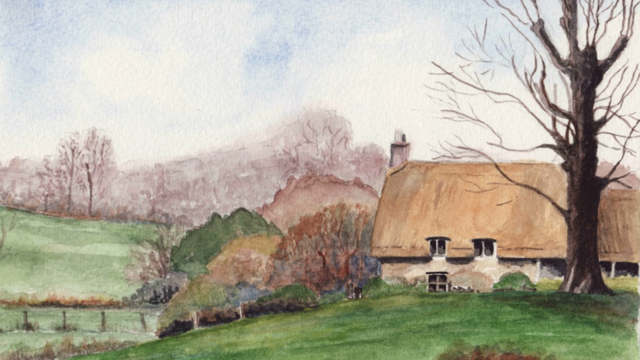TUCKMILL NATURE RESERVE
Tuckmill - also known as Tuckmill Meadows - is an wonderfully diverse 15 acre nature reserve on the outskirts of Shrivenham. It is a Site of Special Scientific Interest (SSSI) for both its calcareous (limestone) fen and its species-rich neutral and calcareous grassland. Tuckmill Stream forms its north-east boundary while, to the west, there are the aspen, ash and sycamore trees of Ratcoombe Copse. Shrivenham Park Golf Club is another neighbour as well as Cross Trees Park, the land of which provides the catchment area for Ratcoombe Brook. This brook forms the spine of the whole reserve, flowing into the larger Tuckmill Stream and carrying with it limestone from the reserve’s Coral Rag rock base. There are many springs along the boundary - both sides of the Ratcoombe Brook and the Tuckmill Stream where the limestone merges into the clay-like material.
Tuckmill Stream, from which the nature reserve gets its name, originally meandered across the site. However this was straightened during the 12th century for use in a mill which was part of Tuckmill Farm and sited on the brook's Watchfield bank. The residual meanders of the stream today form the fenland that is a significant part of the reserve.
Tuckmill Stream, from which the nature reserve gets its name, originally meandered across the site. However this was straightened during the 12th century for use in a mill which was part of Tuckmill Farm and sited on the brook's Watchfield bank. The residual meanders of the stream today form the fenland that is a significant part of the reserve.
During the 'lockdown' period of the Coronavirus pandemic, from March to July 2020, Shrivenham Heritage Society produced a mini-presentation series which includes a great article by Neil Maw about the history of Tuckmill farm which was also known as Little Mill. Click on the button below to read more about the farm and get an insight into the process known as 'tucking'.
|
|
email: [email protected]
mail: Friends of Tuckmill, Shrivenham Parish Office, Memorial Hall, Highworth Road, Shrivenham SN6 8BL Copyright Friends of Tuckmill 2021-2023 |




